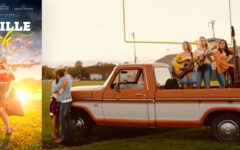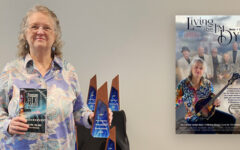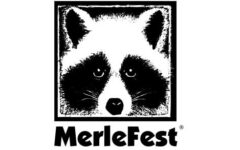 Some of our readers may have seen a video documentary on Bill Monroe in the mid 1990s called Bill Monroe – Father Of Bluegrass Music. It aired on several PBS affiliate stations and The Nashville Network (TNN), and was briefly available on VHS and later DVD, but was not widely distributed – until now.
Some of our readers may have seen a video documentary on Bill Monroe in the mid 1990s called Bill Monroe – Father Of Bluegrass Music. It aired on several PBS affiliate stations and The Nashville Network (TNN), and was briefly available on VHS and later DVD, but was not widely distributed – until now.
Using both archival footage and newly shot performances during Monroe’s final years, together with lengthy interviews, the film tells the story of Bill Monroe in his own words, with his own music. There are musical segments from Bill and The Blue Grass Boys along with a reunion performance featuring Del McCoury, Chubby Wise and Bill Keith.
Interviews on the impact of Bill Monroe’s music are included with artists as diverse as Jerry Garcia and Roy Acuff, as well as legends like Lester Flatt, Paul McCartney, Dolly Parton and John Hartford.
Bill Monroe – Father Of Bluegrass Music has been remastered for DVD and was re-released by MVD Entertainment in July of 2008, and is available now for purchase.
The 90 minute film was the brainchild of Steve Gelbhardt and Larry Nager, who wrote, produced and directed it as a labor of love while both held down full-time employment outside the music or film worlds. We had a chance to get some details from both of them about this film and how they came to create it.
Nager, who will host a screening and a panel discussion during IBMA week at The Country Music Hall Of Fame and Museum (10/2), shared a bit about his involvement.
“The film’s inception came through director Steve Gebhardt, who approached me about writing it (and writing a lot of the grant application materials). It was 1988 or 1989.
I was then music editor of the Cincinnati Post and before that, had played upright bass with Red Allen, the Harley Allen-Mike Lilly Band, the Katie Laur Band. At the time I was playing sporadic shows with former Blue Grass Boy, Tony Ellis (we were the first bluegrass group to play in Belarus). So the Bill Monroe project seemed a perfect fit, bringing together both my worlds. And Mr. Monroe was the reason I started playing in the first place, through an album I happened to pick up in 1969 when I was 15 – 16 Bluegrass Instrumentals.”
Gebhardt had developed a passion for filmmaking while a student of architecture and design at the University of Cincinnati in the 1960s. After receiving graduate training, he taught in the UC film department before making the move to New York which led to an association with John Lennon and Yoko Ono and their film production company, Joko Films.
Steve directed 18 films during his time with Lennon, including the One To One Concert at Madison Square Garden which was broadcast on ABC, Lennon’s last public performance before his death.
He also produced the Ladies and Gentlemen concert film for The Rolling Stones in 1972 and – among other projects – spent several years working on a biographical documentary, Twenty to Life – The Life & Times of John Sinclair, which was released in 2007.
Not much in that background suggests that Gebhardt might embark on a Bill Monroe documentary, but he tells us that he had been a grasser from way back.
“I was an old bluegrass lover (listner not player) from college and went to Beanblossom in the late-60’s with like-minded people. I saw the Stanley Brothers at a club a couple of weeks before Carter died, and filmed at Beanblossom in 1968, ’69 and ’70. When I moved to NYC, I saw Monroe at the 23rd St. YMCA (as I lived on 22nd St, a block away).
When I returned to Ohio my deep interest caused me to write the NEA for an American Masters grant for a Monroe documentary. Then I met Larry Nager and with his writing I got the grant (and a bunch of others) that enabled us to make the film.
The fact is that doing a project like this takes more than grants ever provide. I worked as an architect all through this period to pay my bills and allow me to do the film. Larry Nager wrote for the afternoon newspaper to earn his keep. It took 3 years to do this project.”
When the film was completed, the version that was aired on television was a shortened edit. Steve said that could not release it to theaters because of a technical issue.
“We were not able to release it to theaters because one of the early cameramen shot his footage at 30fps (frames per second) while the others shot at 24fps. That alone prevented a simple blow-up to 35mm.
However my ambition was to make this for ‘television’ and ‘home video,’ which we did. My interest was in propaganda – reaching a larger audience for Monroe through his crossover influences like Jerry Garcia, Paul McCartney, Emmylou Harris, etc.
The original source was 16mm ECN film which was transferred to D2 digital format and cut on an Avid suite (3rd Avid out there in 1990). This was one of the first ‘battles’ of the digital age. The audio was recorded on multi-track at Beanblossom twice, at the Grand Ole Opry in Nashville, and at Frontier Ranch near Columbus, OH – as well as other ‘performance’ locations – and in stereo by Geoff Maxwell from Cincinnati. Geoff mixed all the audio.”
This new DVD release includes the full 90 minute documentary, plus some material never released on the earlier VHS or DVD packages.
“We added I’m Working On A Building as a bonus track to this edition. We also have the earlier bonus material including ‘Never Leave the A-String.’ “
Bill Monroe – Father Of Bluegrass Music is available widely online (Amazon, etc) as well as specialty resellers who carry music-related DVDs. Orders can also be placed one the MVD Entertainment Group web site.







